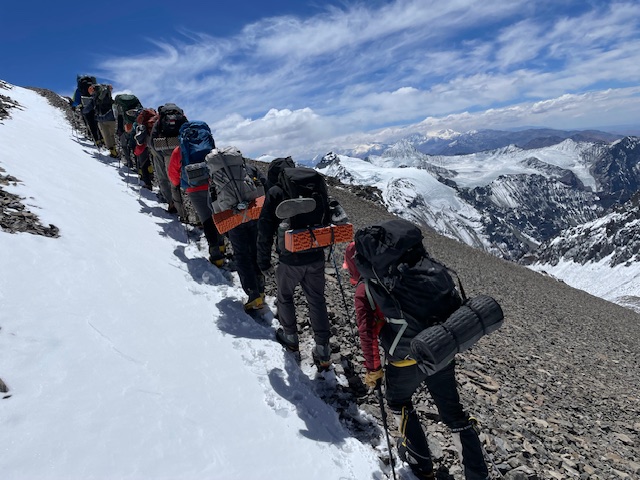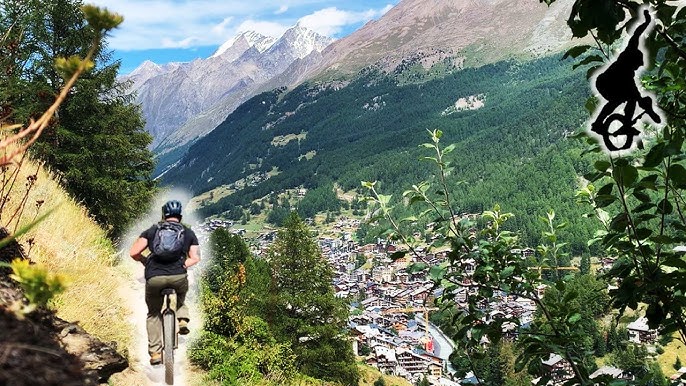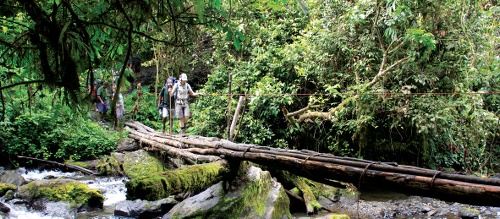Beyond the Tourist Trail: Three Unforgettable Mountain Challenges

Are you an adventure traveler constantly seeking to push your boundaries and experience something truly extraordinary? Tired of the same old tourist traps? Then you've come to the right place. Adventure tourism is booming, with more and more people yearning for intense physical and cultural experiences that leave a lasting impact. This article is your guide to three mountain challenges that go far beyond the typical vacation, offering unforgettable journeys of self-discovery and breathtaking landscapes. Get ready to be inspired and to test your limits in ways you never thought possible!
Section 1: Summiting Aconcagua - The Stone Sentinel
Location: Towering over the Andes Mountains in Argentina, Aconcagua stands as the highest peak outside of Asia. Its imposing presence dominates the landscape, a silent guardian of the South American continent. This colossal mountain, often referred to as the "Stone Sentinel," attracts experienced mountaineers from around the globe who seek to conquer its formidable slopes.
Challenge: Summiting Aconcagua is not for the faint of heart. It's a true test of physical and mental endurance. The altitude presents a significant challenge, with altitude sickness a common threat. Symptoms can range from debilitating headaches and nausea to disorientation and potentially life-threatening conditions like pulmonary or cerebral edema. The extreme weather conditions are equally demanding. Bitter cold, often plummeting to well below freezing, combines with ferocious winds to create a hostile environment. Acclimatization is crucial, requiring a carefully planned ascent with strategically placed camps to allow your body to adapt to the thinning air.
Equipment: Success on Aconcagua hinges on having the right gear. Essential items include high-altitude mountaineering boots, providing warmth and support on icy terrain; a layered clothing system to adapt to fluctuating temperatures; a durable four-season tent capable of withstanding high winds; a high-quality sleeping bag rated to at least -20°F for frigid nights; an ice axe and crampons for navigating glaciers and snowfields; and supplemental oxygen, which may be necessary depending on your acclimatization and the conditions on the mountain. Before your expedition, ensure all equipment fits properly and has been thoroughly tested. Don’t underestimate the importance of familiarizing yourself with your gear – your life may depend on it!
Cultural Considerations: The local Andean culture plays a vital role in Aconcagua expeditions. Andean guides and porters possess invaluable knowledge of the mountain and its conditions, offering expertise and support. Showing respect for their customs and traditions is essential. Aconcagua has a rich history intertwined with indigenous beliefs. Before the arrival of Europeans, the mountain held spiritual significance for the local people. Early exploration attempts were often fraught with peril. Recognizing this history adds depth to the experience, reminding climbers of the mountain's cultural importance.

Section 2: Tackling the Kokoda Track - A Jungle Pilgrimage
Location: The Kokoda Track winds its way through the rugged Owen Stanley Range in Papua New Guinea. It's characterized by its dense jungle environment and challenging terrain. This single-file foot thoroughfare spans 96 kilometres (60 mi) – 60 kilometres (37 mi) in a direct line – through some of the most rugged and isolated terrain in the world
Challenge: The Kokoda Track holds immense historical significance as the site of fierce battles during World War II. Trekking the track is a grueling physical challenge, demanding incredible stamina and resilience. Steep climbs and descents, frequent river crossings, and the oppressive humidity take a toll on even the most experienced hikers. The risk of tropical diseases like malaria is a constant concern. Perhaps the most profound aspect of the Kokoda Track is the emotional toll of walking in the footsteps of the soldiers who fought and died there. It's a humbling experience that offers a unique perspective on history and sacrifice.
Equipment: Essential gear for the Kokoda Track includes sturdy hiking boots to provide ankle support on uneven ground; lightweight and breathable clothing to combat the humidity; a high-quality mosquito net to protect against malaria-carrying mosquitoes; water purification tablets to ensure safe drinking water; a comprehensive first-aid kit with malaria medication; and a durable backpack to carry all your supplies. Don’t forget leech socks and insect repellent – they are essential for comfort and protection in the jungle environment.
Cultural Considerations: The local Papua New Guinean porters and guides are the backbone of Kokoda Track treks. Hiring local support is not only economically beneficial but also essential for a safe and enriching experience. These individuals possess unparalleled knowledge of the jungle, its trails, and its dangers. Respecting their expertise and their culture is paramount. The history of the track is deeply intertwined with the local communities, many of whom played a crucial role in assisting the Allied forces during the war. Engaging with these communities and learning about their stories adds a layer of depth to the trek, creating a powerful connection to the past.

Section 3: Mountain Unicycling in the Swiss Alps - Balancing Act of a Lifetime
Location: The Swiss Alps offer a breathtaking backdrop for mountain unicycling. Trails near Zermatt or Davos provide stunning scenery and challenging terrain for riders of all skill levels. Imagine navigating narrow switchbacks with snow-capped peaks towering above you – it's an experience unlike any other!
Challenge: Mountain unicycling is a true test of balance, coordination, and mental fortitude. It requires a unique set of technical skills, including the ability to navigate steep inclines, descend rocky trails, and maintain control on uneven surfaces. Falls are inevitable, so it’s crucial to be prepared for the risks. The thrill of conquering a challenging section of trail on one wheel is an incredible reward.
Equipment: Essential gear for mountain unicycling includes a durable mountain unicycle equipped with disc brakes for reliable stopping power; a helmet to protect your head in case of falls; knee and elbow pads to cushion impacts; gloves for grip and protection; and sturdy shoes with good traction. Proper unicycle setup and maintenance are crucial for safety and performance.
Cultural Considerations: The Swiss have a deep appreciation for outdoor sports and a strong tradition of cycling. Respecting trail etiquette is essential when mountain unicycling in the Alps. Give way to hikers, stay on marked trails, and leave no trace behind. Learning about the history of cycling in the Alps adds another layer of appreciation to this unique adventure.
Conclusion
Aconcagua, the Kokoda Track, and mountain unicycling in the Swiss Alps each present unique and demanding challenges. They require significant physical and mental preparation, as well as a deep respect for the local cultures and environments. However, the rewards of pushing your personal boundaries and experiencing these incredible adventures are immeasurable. Remember the importance of responsible tourism, adequate physical preparation, and genuine cultural sensitivity. These mountains await those who are willing to challenge themselves and embrace the unknown.
Call to Action
Ready to embark on your own unforgettable mountain adventure? Visit vistalocation.com for vetted resources and reputable tour operators like Andes Ascent for Aconcagua, Kokoda Treks PNG for the Kokoda Track and Swiss Cycle Adventures for unicycling in the Swiss Alps. Start planning your journey today!